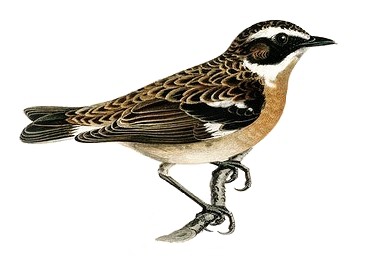
Introduction
Welcome to part 3 of the Poetry Basics blog series! If you missed part 1 where I shared some inspiration, ideas, and helpful resources, or part 2 on how to write the first few lines, you can find that those parts here:
In today’s post, I will be talking again about the writing process – How to Develop Your Poem!
Developing Your Poem
Once you have written the beginning, it is time to start developing the rest of your poem. Ask yourself where you want this particular piece of poetry to go. What thoughts are you trying to convey to the reader? What do you want the reader to take away from the poem?
In my poem, “Cottage in the Woods”, my goal was to imitate the style of Edward Thomas in his piece “Adlestrop” by painting a simple, but beautiful, picture of an ordinary thing.
Cottage in the Woods
by Natalie Claire
A cottage stands forgotten.
I know not why.
I saw it in the shaded woods,
As I was strolling by.
A lovely home it might have been,
With someone living there.
But now the yard is overgrown,
The rooms completely bare.
Perhaps the cottage wants to hide,
Recalling memories,
Shared only with the dusty path,
And with the sheltering trees.
With this poem, I wanted to show that beauty can be found in the most ordinary places – even a crumbled-down cottage in the woods. This poem was inspired, in fact, by an abandoned house I found while walking through the woods one day. To look at that real house, one would hardly think it was the inspiration for a piece of poetry when, as a matter of fact, it actually was.
Poem Breakdown
In order to put the point across that the cottage is more than a heap of debris, I first state…
A lovely home it might have been,
With someone living there.
Before going on about it’s less-than-appealing appearance in the lines:
But now the yard is overgrown,
The rooms completely bare.
And the last stanza draws a compromising middle line, giving a poetic excuse for the poor condition of the place:
Perhaps the cottage wants to hide,
Recalling memories,
Shared only with the dusty path,
And with the sheltering trees.
Did I think this out before penning this piece? No. I didn’t even have it in the forefront of my mind while I was writing. But I knew what I wanted to convey. And since I knew where I wanted to go with is, it was much easier to achieve the desired end.
Conclusion
To craft a memorable piece of poetry, it is helpful to know beforehand what you wish to convey through your poem. This helps you to develop your poem rationally instead of rambling on and on or hitting a roadblock. If you know what elements you want to include, it will be easier to pen a first draft that isn’t far from being a finished product.

P.S. You can also follow me at my other blog, Kenmore Pines 1, here.
To learn more about this blog check out my blog launch post here.

One thought on “Poetry Basics 3: How To Develop Your Poem”